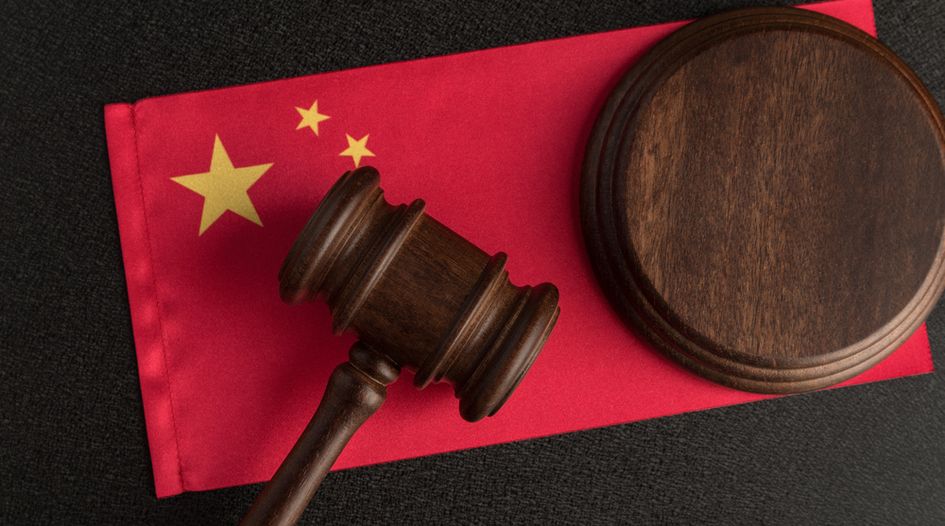Opposition trends in China reveal CNIPA crackdown on trademark squatting

This is an Insight article, written by a selected partner as part of WTR's co-published content. Read more on Insight
In summary
In recent years, the China National Intellectual Property Administration (CNIPA) has significantly bolstered its efforts to crack down on trademark squatting and protect prior rights in opposition proceedings, yielding positive outcomes. Recent practices suggest that the CNIPA increasingly relied on prior trademark registrations or catch-all provisions to curb bad faith filings in trademark oppositions. This article analyses and discusses key features and trends of applying such provisions in oppositions, aiming to equip readers with insights to enhance their chances of success in opposition proceedings.
Discussion points
- Think strategically: filing opposition or proceeding directly to invalidation
- Selecting adequate opposition grounds based on examination trends
- Recent trends on applying catch-all provisions for bad faith filings
- Sufficiency of evidence affecting likelihood of success in opposition
Referenced in this article
- (2024) Shangbiaoyizi No. 9546 opposition decision
- (2024) Shangbiaoyizi No. 12461 opposition decision
- (2024) Shangbiaoyizi No. 30128 opposition decision
- (2023) Shangbiaoyizi No. 77671 opposition decision
- (2024) Shangbiaoyizi No. 434 opposition decision
- (2023) Shangbiaoyizi No. 20051 opposition decision
- (2023) Shangbiaoyizi No. 112854 opposition decision
The success rates of trademark oppositions in China have steadily increased from 2021 to 2023, reaching 48.3 per cent, 56.41 per cent and 59.08 per cent, respectively, according to third-party statistics.[1] This increase is primarily attributed to the CNIPA’s intensified efforts to combat trademark squatting and safeguard prior rights. On one hand, the rates of cases resulting in refusal (including partial refusal) after opposition have increased. On the other hand, a relatively large number of malicious trademark applications have been refused during substantial examination, leading to a decline in trademark squatting. Consequently, the volume of trademarks published for opposition has begun to decrease after peaking in 2022.
Despite growing chances of success, the outcomes of trademark oppositions can vary depending on specific facts and arguments presented in each case. The key to enhancing chances of success in opposition proceedings lies in crafting effective overall strategies, grasping specific details of cases, understanding evolving examination practices and applying in-depth knowledge of relevant legal provisions.
Think strategically: filing opposition or proceed directly to invalidation
In light of lower chances of success for oppositions in comparison to invalidations, some rights holders opt to forgo oppositions, and instead file invalidations after trademarks are registered. However, this approach poses risks, because registered trademarks could be promptly used in ways undesirable to rights holders, potentially gaining market share and influence to some extent, which would bring uncertainty and complications to invalidation proceedings. Moreover, oppositions can also be valued as a strategic tool as success rates thereof continue to grow steadily year on year. Particularly with China’s reinforced IP protection policies, proactive rights holders are now more likely to receive support from the CNIPA than before in opposition proceedings. For this reason, we recommend rights holders carefully weigh the pros and cons of oppositions and invalidations based on specific circumstances of each case, and select adequate enforcement actions strategically.
Select adequate opposition grounds based on examination trends
To prevail in opposition proceedings, it is feasible to present both relative and absolute grounds in most cases. Prior rights holders typically rely on article 13 (reproduction, copy and translation of other’s well-known mark), article 15 (pre-emptive filing by agent, representative or based on other business relationship), articles 30 and 31 (similar marks in respect of similar goods and services) and article 32 (prejudice other’s pre-existing rights; pre-emptive registration of other’s mark in use). While any entity can claim absolute grounds, such as article 4 (malicious filings without intent to use), article 10 (signs prohibited from use as a trademark), article 11 (generic names, descriptive or lack of distinctiveness) and article 44(1) (fraud or improper means). These articles apply to specific circumstances of cases with respective requirements, and rights holders are advised to select appropriate articles under the Chinese Trademark Law based on the specific case facts.
Generally, the CNIPA tends to support oppositions based on prior trademark registrations as prescribed in article 30 more frequently, which is also in line with China’s first-to-file principle. Article 30 (including article 31) essentially judges whether the coexistence of the opposed mark and the prior mark would cause confusion, focusing on whether the marks are identical or similar, and whether the goods or services are identical or similar. Additionally, other factors such as the distinctiveness and reputation of the prior mark, the attention of relevant public, whether both parties are in the same industry or geographically close and the applicant’s subjective intent in applying for the opposed mark will be comprehensively taken into account. Notably, in 2020, 70 per cent of all opposition cases were established under article 30. By 2023, that number surged to 91.6 per cent (including partially favourable).[2] This increase suggests that, if rights holders own prior trademarks in the same classes or subclasses, it is strongly recommended to cite article 30 or article 31 to ensure higher chances of success in oppositions.
The CNIPA examiners now adheres more strictly to the CNIPA Classification of Similar Goods and Services (the Classification) in opposition proceedings, and less likely to break through the Classification because opposition is considered as supplementary to preliminary examination process, and a consistent examination standard is desired. Consequently, cross-class protection for well-known mark is rarely granted in opposition proceedings nowadays, unless there were prior well-known mark protection records and the principle of ‘need-based recognition’ is applied. For instance, in the opposition against the ‘Maidangjia in Chinese’ mark (application No. 67776236),[3]the CNIPA applied not only article 30, but also article 13(2) to refuse all designated goods. The CNIPA’s willingness to apply article 13(2) is due to the fact that only partial designated goods could be refused under article 30 alone. Based on previous well-known mark protection records, the CNIPA reaffirmed the well-known status of the cited mark under article 13(2), leading to the refusal of remaining designated goods.
Recent trends on applying catch-all provisions for bad faith filings
In addition to the provision on similar marks in respect of similar goods and services, article 30 also prescribes that ‘where a trademark registration has been applied for is not in conformity with the relevant provisions of this Law, the Trademark Office shall refuse the application’, which grants the CNIPA a legal basis to refuse trademark filings that are in violation of the Chinese Trademark Law. In recent years, the CNIPA has combined article 30 with article 4 (malicious filings without intent to use) or article 7 (catch-all good faith principle) against trademark hoarding and bad faith filings. Here, article 30 serves as a catch-all provision against malicious trademark filings. In the opposition against the ‘Zhangjiang Twin Towers’ mark (application No. 69261394,[4]and the ‘BOXYCHARM’ mark (application No. 67847354),[5] the CNIPA held that in both cases, the opposed parties showed clear subjective intents to plagiarise others’ prior marks, disrupting the normal order of trademark registration management. Notably, the CNIPA applied articles 4 and 30 to the former case mainly because the opponent not only plagiarised the opponent’s mark, but also had records of refusal under article 4 due to lack of actual intent to use the mark, thus also violating the ‘filing on demand’ principle. In the latter case, articles 7 and 30 were applied instead, because the opposed party was involved in other cases where its marks had been invalidated based on article 32 (pre-emptive registration of other’s mark in use), leading the CNIPA to determine that the opposed party’s filings violated the good faith principle prescribed in article 7. Although a clear pattern for applying article 4 or article 7 cannot be determined solely from the two cases, if an opposed party is hoarding excessive trademarks, it is more likely to fall within the scope of regulation under article 4. For obvious malicious plagiarism other than trademark hoarding, judging from the opposition decisions made to date in 2024, the CNIPA is more likely to apply both article 7 and article 30, which obviously deviates from the CNIPA’s invalidation practices that tend to apply other articles first before applying article 7 as a general provision. That said, given that article 7 is no longer an option in the online opposition filing system, whether the CNIPA will change its practices in applying article 7 to refuse opposed marks remains to be further determined.
In addition to articles 4 and 7, the CNIPA previously applied article 44(1) in oppositions, but now does so rarely, probably because the CNIPA views article 44(1) more as a basis for invalidations against a registered mark rather than oppositions. Instances exist where the CNIPA discussed in opposition reasonings that the registrations of the opposed marks are through improper means (implying article 44(1)), yet only article 30 was explicitly referenced in the decisions. In the opposition against the ‘EagleBergnan’ mark (application No. 62139139)[6] and the ‘YigeerBogemann’ mark (application No. 64845231),[7] where the same parties and facts are involved, the CNIPA applied article 30 in both cases but with differing rationales. The opposition decision regarding the ‘EagleBergnan’ mark rendered in July 2023 expressly stated that the opposed mark violated article 44(1), while in the opposition decision regarding ‘YigeerBogemann’ mark rendered in January 2024, the CNIPA held that the registration of the opposed mark was secured through unfair means, which violated the legislative intent of the Chinese Trademark Law without citing article 44(1). Interestingly, the online opposition filing system appears to reflect this shift by greying out the selection of article 44(1) and article 7 as specific grounds for oppositions. As such, rights holders are advised to select article 4 when filing oppositions involving malicious filings through the online opposition filing system, then argue and provide the evidence based on articles 4, 7 and 44(1) to improve their chances of success.
The CNIPA not only adjusted its application of laws, but also strengthened the regulations on malicious registrations and loosened opposition examination process. Generally, finding an opposed party to be malicious in copying and pre-emptively registering other’s marks, a ‘large number’ of squatted marks is required. Recently, the CNIPA relaxed this requirement of a large number if the cited mark possesses strong distinctiveness and a certain degree of popularity. As exemplified in the EagleBergnan case, despite only 10 squatted marks being involved, the CNIPA still found the opposed party’s malicious acts of copying and squatting others’ marks. In the opposition against the ‘Maidanglao in Chinese & Design’ mark (application No. 59766475), where the opposed party owned the opposed mark only and McDonald’s lacked a prior mark in the same class,[8] the CNIPA considered the strong distinctiveness and high reputation of McDonald’s marks in the relevant fields, held the opposed mark resembled McDonald’s mark, showing deliberate imitation of McDonald’s mark and improper free-ride on McDonald’s reputation, and thus refused the opposed mark based on articles 7 and 30.
Furthermore, for rights holders with no prior marks on similar goods and services, limited prior use evidence, or that are not known in China, oppositions can still serve as an effective tool to safeguard their legal rights. It is advisable to reasonably explain the origin and design concept of the mark to demonstrate its inherent distinctiveness, investigate the opposed party (including related entities) and their overall trademark applications to strengthen the case. In cases where the opposed party shows bad faith filings or trademark hoarding, it is essential to investigate whether there are records of opposition, rejection or invalidation due to malicious intent, and emphasise such facts and rulings in oppositions. For instance, in the opposition against the ‘EARL’s PERFORMANCE’ mark (application No. 63952518),[9] despite the opponent’s absence of prior marks or use in China, it filed an opposition based on articles 4, 15(2) and 32, arguing the opposed party’s bad faith based on its trademark registrations oversea. The CNIPA held the evidence provided cannot support these claims but found that the opponent had registered the ‘EARL’s PERFORMANCE’ mark in Australia, and that the opposed party had applied for several marks similar to those registered by the opponent in other countries. Based on these findings, the CNIPA further held that the opposed party had clear intent of plagiarism, violating the legislative spirit of the Chinese Trademark Law, which prohibits obtaining trademark registration through other unfair means, and thus, article 30 was applied to refuse the opposed mark.
Sufficiency of evidence affecting likelihood of success in opposition
The sufficiency of evidence is always a core factor affecting the chances of success of oppositions. Since there is no cross-examination in oppositions, it is recommended to collect evidence as comprehensive and complete as possible before filing. The evidence generally includes:
- fame of the cited mark, including earliest use, period of use, geographical areas for sales, sales volume, examples of actual use, promotional or marketing materials and other protection records;
- fame of the opponent (this is particularly important if the trademark is identical to the trade name); and
- information regarding the opposed party and its affiliated entities, the opposed party’s trademark portfolio (quantity, classes and time of filings), whether the scope of business matches its trademark portfolio, proximity of the geographical location to the opponent, evidence of the opposed party squatting others’ marks or hoarding trademarks for sale, and administrative or judicial records for finding the opposed party’s bad faith.
The evidence of use and reputation of the cited mark should show how the trademark is used, the time of use, and the designated goods and services, demonstrate the use by the opponent (or licensee) in mainland China (or known to Chinese consumers).
For the types of evidence, it is recommended to prioritise third-party evidence with high credibility, and if possible, to enhance its authenticity by notarising or time-stamping. Considering that the online opposition filing system has a 200MB limit for evidence submission, it is also advisable to place crucial evidence at the beginning of the submission. This approach enables the CNIPA examiners to quickly access and effectively assess critical information.
Conclusion
Rights holders are advised to consider the opposition strategies outlined in this article to effectively protect their rights. These strategies can help avoid potential confusion, maintain trademark distinctiveness, and even deter potential trademark infringement to some extent. How to effectively utilise the opposition procedure and enhance the chances of success for oppositions requires ongoing research, particularly amidst the evolving Chinese Trademark Law amendments. Despite these changes, rights holders should always monitor the trends of opposition practices, select appropriate legal provisions and provide case-specific evidence consistently.
Endnotes
[1] The statistics are from https://www.mozlen.com/.
[2] The statistics are from https://www.mozlen.com/ and https://sbj.cnipa.gov.cn/sbj/ssbj_gzdt/202007/t20200703_21216.html.
[3] (2024) Shangbiaoyizi No. 9546 opposition decision regarding the ‘Maidangjia in Chinese’ mark with application No. 67776236.
[4] (2024) Shangbiaoyizi No. 12461 opposition decision regarding the ‘Zhangjiang Twin Towers’ mark with application No. 69261394.
[5] (2024) Shangbiaoyizi No. 30128 opposition decision regarding the ‘BOXYCHARM’ mark with application No. 67847354.
[6] (2023) Shangbiaoyizi No. 77671 opposition decision regarding the ‘EagleBergnan’ mark with application No. 62139139.
[7] (2024) Shangbiaoyizi No. 434 opposition decision regarding the ‘YigeerBogemann’ mark with application No. 64845231.
[8] (2023) Shangbiaoyizi No. 20051 opposition decision regarding the ‘Maidanglao in Chinese & Design’ mark with application No. 59766475.
[9] (2023) Shangbiaoyizi No. 112854 opposition decision regarding the ‘EARL’S PERFORMANCE’ mark with application No. 63952518.

